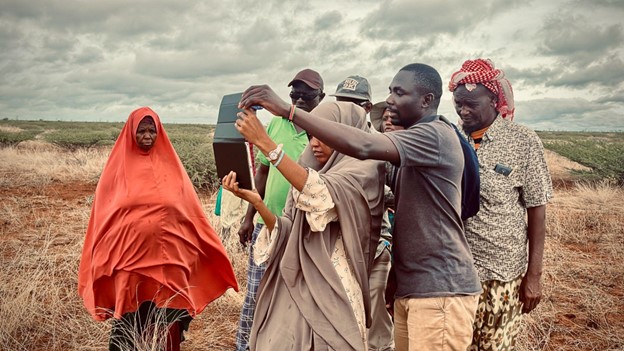Nature is a victim of armed conflict
- From
-
Published on
11.11.24
- Impact Area

By Kristen Tam
Natural resource extraction has been a historical point of conflict and wars, but can we use the environment to bring about peace instead? In Colombia, there are armed groups across the country that accumulate land designated for biodiversity preservation which leads to preventing environmental officials and programs from entering areas under their control, and displaces communities. Juan Villegas, Environmental Peace and Land Emphasis organizer from MAPP-OEA Colombia who shared this information gave the audience a call to action: “peace in Colombia is a matter of global concern and an environmental and climatic imperative for the entire planet.”
Peace with nature
With that, Janelle Sylvester from Alliance Bioversity-CIAT and Monica Amador, Advisor to the Minister of Environment on Peace and Human Rights: Ministry of Environment and Sustainable Development Colombia unpacked ways to pursue environmental peace. At Session 14 Environmental Peace: Pathways to Foster Just Transitions Towards Sustainability, they both shared three key foundational components on how to work towards peace with nature:
- Foster biodiversity supporting economies, through innovative and alternative financial mechanisms that reach local communities
- Effective natural resource governance, through legal frameworks in constitutions and local regimes to implement peace making plans
- Inclusive and participatory processes, especially including women, Indigenous Peoples and marginalized groups, and have an ethic of care.

Janelle Sylvester presents about environmental peace building. Photo credit: CGIAR/Kristen Tam
Sylvester presented three case studies, one of which highlighted the Participatory rangeland management (PRM) program that works with pastoralists and agro-pastoralists to improve their livelihoods and food security in the context of competing land demands in rangelands. The International Livestock Research Institute (ILRI) directly implements PRM such as through this project: Supporting Wajir communities to carry out participatory rangeland management which works towards future planning for rangeland management between different groups to promote peace and collaboration and prevent conflict.
The panellists left us with their one word of hope: mobilization, transformation, mutual understanding, and power of cooperation. The Environmental Health & Biodiversity Platform is not taking peacebuilding lightly and hopes delegations at COP16 can see the way forward to peace through these environmental peace building frameworks. You can learn more about the pathway to peace in the CGIAR brief: Environmental peacebuilding as a pathway to peace with nature co-authored by Sylvester.
Related news
-

Strengthening One Health through rangelands stewardship
Multifunctional Landscapes Science Program04.12.25-
Climate adaptation & mitigation
HEAL community rangeland health workers presented at the 33rd Annual Conference of the Ethiopian Soc…
Read more -
-

Innovative Aloe vera ventures: Community Rangeland Health Workers paving the way for healthy people and healthy rangelands
Multifunctional Landscapes Science Program04.12.25-
Climate adaptation & mitigation
The One Health approach connects the health of humans, animals, and the environment. By fostering…
Read more -
-

How District Technical Working Groups are Reviving Cambodia’s Floodplain Ecosystems
Scaling for Impact Program04.12.25-
Climate adaptation & mitigation
By Sao Sok, WorldFish & Sanjiv De Silva, IWMI Cambodia’s diverse natural ecosystems remain cen…
Read more -

